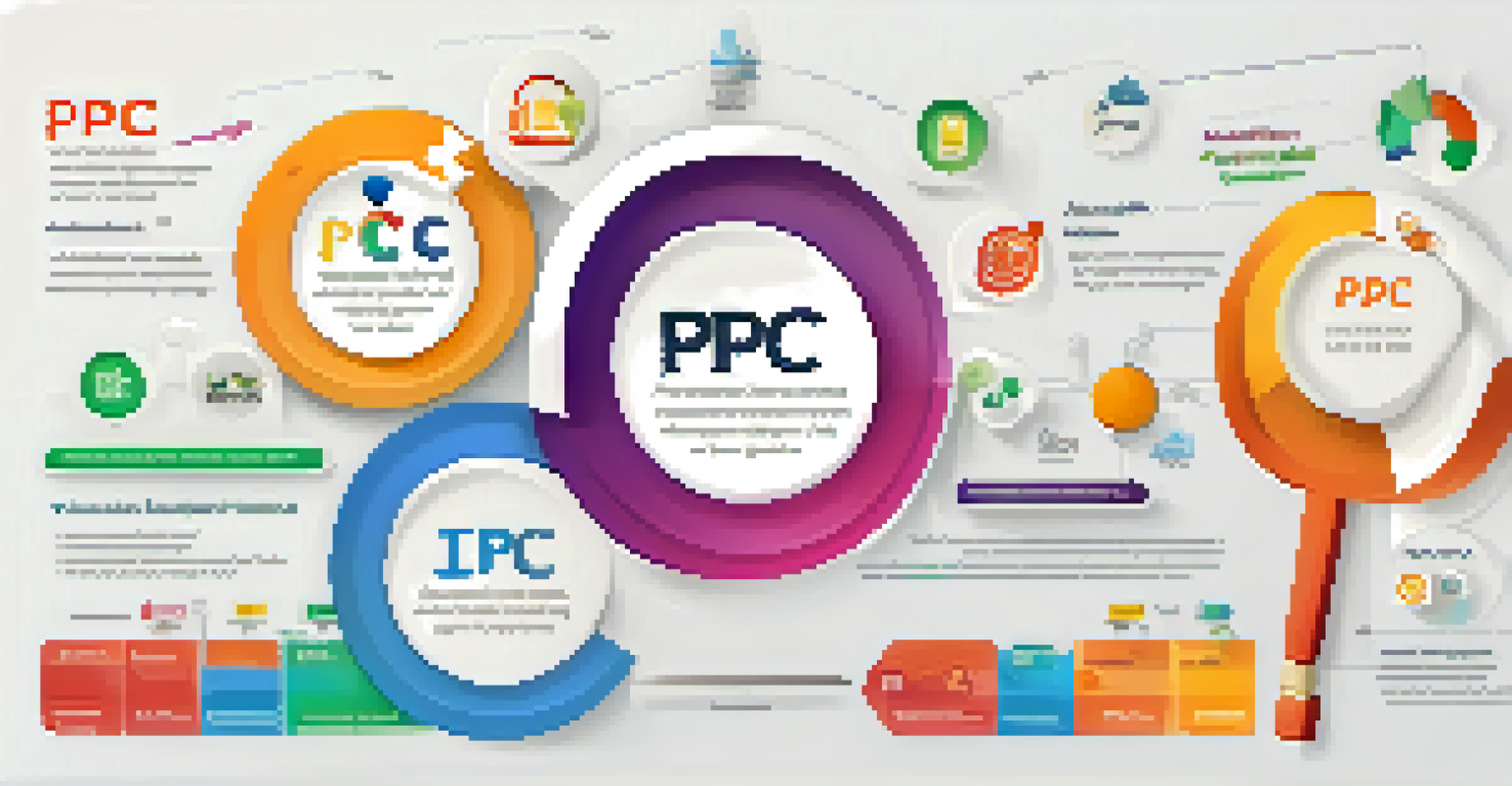Utilizing PPC Advertising to Drive Immediate Traffic Online

Understanding PPC Advertising and Its Benefits
PPC, or pay-per-click advertising, is a model where advertisers pay each time someone clicks on their ad. This method allows businesses to showcase their products or services immediately, making it an attractive option for driving instant traffic to a website. It's different from traditional advertising because you only pay when someone shows interest by clicking your ad.
Good advertising does not just circulate information. It penetrates the public mind with desires and belief.
One of the biggest advantages of PPC is its ability to generate immediate results. Unlike organic search engine optimization, which can take time to build momentum, PPC puts your ads at the forefront of search results right away. This means that if you're launching a new product or running a time-sensitive promotion, PPC can be your best friend.
Additionally, PPC platforms like Google Ads offer a wealth of data and analytics. This allows you to track the performance of your ads in real time, adjust your strategies promptly, and optimize your campaigns for better results. Understanding this landscape is crucial for any business looking to leverage online advertising effectively.
Setting Clear Goals for Your PPC Campaigns
Before diving into PPC, it's essential to set clear and measurable goals. Are you aiming for brand awareness, lead generation, or direct sales? Defining your objectives helps tailor your campaigns to meet specific outcomes and ensures that your budget is spent wisely.

For example, if your goal is to increase brand awareness, you might focus on broader keywords to attract a larger audience. Conversely, if you're looking to generate leads, more targeted keywords related to your product or service would be more effective. Aligning your goals with your PPC strategy is key to maximizing your return on investment.
Optimize Ads and Landing Pages
Compelling ad copy and relevant landing pages enhance user experience and increase conversion rates.
Regularly reviewing and adjusting these goals based on performance can also provide valuable insights. This ongoing evaluation helps you understand what works and what doesn’t, allowing you to pivot your strategy as needed and keep your campaigns aligned with your business objectives.
Choosing the Right Keywords for Effective Ads
The foundation of any successful PPC campaign is selecting the right keywords. These are the terms users type into search engines, and they play a crucial role in determining who sees your ads. Using keyword research tools can help you identify which keywords are most relevant to your business and have the potential to drive traffic.
The best marketing doesn’t feel like marketing.
It's also important to consider the intent behind the keywords. For instance, someone searching for 'buy shoes online' has a different intent than someone searching for 'shoe styles.' By understanding these nuances, you can better target your audience and craft ads that resonate with their needs and desires.
Moreover, don’t forget about long-tail keywords. These are longer, more specific phrases that may have lower search volume but often lead to higher conversion rates. They can be less competitive, making it easier to rank higher in search results and attract quality traffic to your site.
Crafting Compelling Ad Copy That Converts
Once you have your keywords nailed down, the next step is crafting ad copy that grabs attention and encourages clicks. Your ad should clearly convey what you offer and why it’s beneficial, all while including a compelling call to action. Think of your ad as a first impression – it needs to stand out in a crowded marketplace.
For example, instead of simply stating ‘Buy Shoes,’ a more effective approach could be ‘Discover Stylish Shoes at 20% Off Today!’ This adds urgency and value, motivating potential customers to click through. Experimenting with different headlines and descriptions can also help you find the most effective messaging.
PPC Delivers Instant Results
PPC advertising allows businesses to see immediate traffic and engagement by placing their ads prominently in search results.
Remember, clarity is key. Avoid using jargon that might confuse readers and instead focus on straightforward language that speaks directly to your audience's needs. The goal is to create a seamless transition from the ad to the landing page, ensuring that the user experience remains smooth and inviting.
Optimizing Landing Pages for Maximum Conversion Rates
When a user clicks on your ad, they should be directed to a landing page that aligns with their expectations. If your ad promises a discount on shoes, the landing page should prominently feature that offer. This relevancy not only improves user experience but also increases the likelihood of conversion.
A well-optimized landing page includes clear headlines, engaging visuals, and a straightforward call to action. You might want to consider using testimonials or reviews to build trust and credibility. This can be the difference between a visitor bouncing away and completing a purchase.
Additionally, ensure your landing pages load quickly and are mobile-friendly. With an increasing number of users accessing sites via smartphones, a seamless mobile experience is vital. Regularly testing and optimizing your landing pages can significantly enhance your PPC campaign's effectiveness.
Tracking and Analyzing PPC Campaign Performance
Once your PPC campaigns are up and running, tracking their performance is essential. Most platforms, like Google Ads, provide detailed analytics that allow you to see which ads are performing well and which need adjustments. Monitoring metrics such as click-through rate (CTR), conversion rate, and return on ad spend (ROAS) helps you gauge the effectiveness of your campaigns.
For instance, if you notice a high CTR but low conversion rates, it may indicate that while your ad is enticing, the landing page is not meeting expectations. This insight allows you to make informed decisions and optimize your campaigns continuously. It’s all about being proactive rather than reactive.
Set Clear PPC Campaign Goals
Establishing specific, measurable objectives helps tailor PPC strategies and ensures efficient budget allocation.
Moreover, setting up conversion tracking can help you understand the customer journey better. By identifying which keywords and ads lead to actual sales or sign-ups, you can allocate your budget more effectively and focus on what truly drives results.
Adjusting Strategies Based on Performance Insights
The digital landscape is always changing, and so should your PPC strategies. Regularly reviewing performance data allows you to identify trends and make necessary adjustments. If certain keywords are underperforming, don’t hesitate to pause or replace them with new ones that may yield better results.
Moreover, experimenting with different bidding strategies can also lead to improved performance. For example, if you're currently using manual bidding, consider testing automated options that optimize bids based on performance data. This can save you time and potentially increase your ad visibility.

Lastly, keep an eye on your competition. Understanding what others in your industry are doing with their PPC campaigns can provide valuable insights and inspiration for your own strategies. Adaptability is key in ensuring your campaigns remain competitive and effective.